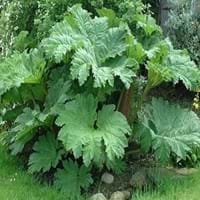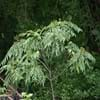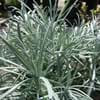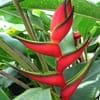Life Span
Perennial
Perennial
Type
Tender Perennial
Bulb or Corm or Tuber
Origin
Central America
Southern Africa, South Africa
Types
Not Available
Cusick's camas, large camas
Number of Varieties
Not Available
Habitat
Wet forest, Woodland Garden
meadows, moist forests, Open Plains
USDA Hardiness Zone
9-12
8-10
AHS Heat Zone
7-1
Not Available
Sunset Zone
H1, 14, 15, 16, 17, 20, 21, 22, 23, 24
21,22
Habit
Clump-Forming
Rosette/Stemless
Flower Color
Dark Red, Dark Salmon, Sienna
White, Yellow, Red, Blue, Purple, Pink, Lavender, Violet
Flower Color Modifier
Bicolor
Bicolor
Fruit Color
Not Available
Not Available
Leaf Color in Spring
Green
Green
Leaf Color in Summer
Green
Light Green
Leaf Color in Fall
Green
Several shades of Green
Leaf Color in Winter
Light Green
Light Green
Leaf Shape
Lobed
Long slender
Plant Season
Spring, Summer, Fall, Winter
Spring, Winter
Sunlight
Partial Sun, Partial shade
Full Sun, Partial Sun
Growth Rate
Medium
Medium
The pH of Soil
Acidic, Neutral
Acidic, Neutral
Soil Drainage
Average
Well drained
Bloom Time
Not Available
Early Spring, Spring, Late Winter, Indeterminate
Tolerances
Drought
Black Walnut Toxicity, Rabbit, Shade areas
Where to Plant?
Container, Ground
Container, Ground, Pot
How to Plant?
Seedlings
chipping, Offsets, scooping, Twin scaling, Vegetative
Plant Maintenance
Medium
Low
Watering Requirements
Regular watering during dry periods
Medium
In Summer
Lots of watering
Lots of watering
In Spring
Moderate
Moderate
In Winter
Average Water
Average Water
Soil pH
Acidic, Neutral
Acidic, Neutral
Soil Drainage Capacity
Average
Well drained
Sun Exposure
Partial Sun, Partial shade
Full Sun, Partial Sun
Pruning
Remove damaged leaves, Remove dead branches, Remove dead leaves
Remove damaged leaves, Remove dead branches, Remove dead leaves
Fertilizers
Dilute liquid fertiliser
All-Purpose Liquid Fertilizer, General garden fertilizer, Time release fertilizer
Pests and Diseases
Downy mildew, Leaf spot, Rust
Pests and diseases free
Plant Tolerance
Drought
Black Walnut Toxicity, Rabbit, Shade areas
Flower Petal Number
Not Available
Single, Double, Semi-Double
Fragrant Flower
Not Available
Yes
Foliage Texture
Bold
Medium
Foliage Sheen
Matte
Glossy
Allergy
allergic reaction
Asthma
Aesthetic Uses
Bog Garden, Water gardening
Bouquets, Cottage Garden
Beauty Benefits
Not Available
For treating wrinkles, Remove blemishes, Skin Problems
Edible Uses
Yes
Sometimes
Environmental Uses
Air purification
Air purification, Forms dense stands, Very little waste
Medicinal Uses
Not Available
Leucoderma, Urinary problems
Part of Plant Used
Stem
Bulbs, Root
Other Uses
Jam, Jelly, Sauces
Animal Feed, Decoration Purposes, Showy Purposes
Used As Indoor Plant
No
Yes
Used As Outdoor Plant
Yes
Yes
Garden Design
Feature Plant, Mixed Border, Tropical
Bedding Plant, Container, Cutflower, Mixed Border, Rock Garden / Wall
Botanical Name
GUNNERA insignis
Hyacinthus orientalis
Common Name
Giant Rhubarb, Poorman's Umbrella
Hyacinth, common hyacinth, garden hyacinth, dutch hyacinth
In Hindi
Giant Rhubarb
ह्यचीन्थ
In German
Riesen- Rhabarber
Hyazinthe
In French
Géant rhubarbe
jacinthe
In Spanish
Gigante ruibarbo
jacinto
In Greek
Giant Ραβέντι
υάκινθος
In Portuguese
Rhubarb gigante
jacinto
In Polish
Giant Rabarbar
hiacynt
In Latin
Giant RHEUM
et hyacinthinas,
Phylum
Magnoliophyta
Magnoliophyta
Class
Magnoliopsida
Liliopsida
Order
Haloragales
Liliales
Family
Gunneraceae
Liliaceae
Clade
Angiosperms, Core eudicots, Eudicots
Angiosperms, Monocots
Tribe
Not Available
Not Available
Subfamily
Not Available
Scilloideae
Number of Species
Not Available
Importance of Giant Rhubarb and Wild Hyacinth
Want to have the most appropriate plant for your garden? You might want to know the importance of Giant Rhubarb and Wild Hyacinth. Basically, these two plants vary in many aspects. Compare Giant Rhubarb and Wild Hyacinth as they differ in many characteristics such as their life, care, benefits, facts, etc. Every gardener must at least have the slightest clue about the plants he wants to plant in his garden. Compare their benefits, which differ in many ways like facts and uses. The medicinal use of Giant Rhubarb is Not Available whereas of Wild Hyacinth is Leucoderma and Urinary problems. Giant Rhubarb has beauty benefits as follows: Not Available while Wild Hyacinth has beauty benefits as follows: Not Available.
Compare Facts of Giant Rhubarb vs Wild Hyacinth
How to choose the best garden plant for your garden depending upon its facts? Here garden plant comparison will help you to solve this query. Compare the facts of Giant Rhubarb vs Wild Hyacinth and know which one to choose. As garden plants have benefits and other uses, allergy is also a major drawback of plants for some people. Allergic reactions of Giant Rhubarb are allergic reaction whereas of Wild Hyacinth have Asthma respectively. Having a fruit bearing plant in your garden can be a plus point of your garden. Giant Rhubarb has no showy fruits and Wild Hyacinth has no showy fruits. Also Giant Rhubarb is not flowering and Wild Hyacinth is not flowering . You can compare Giant Rhubarb and Wild Hyacinth facts and facts of other plants too.





